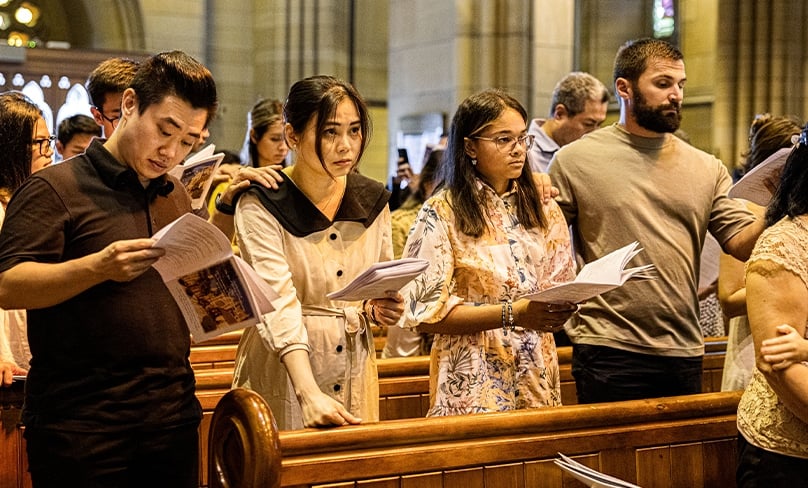
About 20 years ago when I was living in the UK, I remember browsing a hardcover annual Catholic directory published by the Catholic bishops’ conference.
They had the numbers on everything. You could read about Mass attendance, clergy numbers, the baptisms and weddings—and also the number of adult receptions into the church.
But we don’t seem to have anything like this in Australia. Our Official Directory of the Catholic Church was run for about 26 years by the National Council of Priests (NCP) and tended to focus on clergy.
Last year, the NCP handed the directory back to the Australian Catholic Bishops Conference. I have secret hopes that this will mean more publicly available data about the Catholic population of Australia in future.
One of the things I’ve discovered while analysing the Catholics in Australia survey data is how little we know about converts.
We read individual stories in the Catholic media, but that’s anecdote, rather than data. And we might get a number occasionally, such as “around 150 adults were received into the church at the cathedral this Easter.”
But wouldn’t it be amazing to have more accurate numbers on this? It would also be amazing to go back to a sample set of converts every 5-10 years and see how they’re going. Are they still Catholics, for example?
I can’t promise you any of this, but I can tell you what I found in my survey data. I had 297 converts who were willing to tell me about themselves, which is around 13 per cent of my total group.
There were converts who lived in every state and territory in Australia, but half of them lived in NSW (33 per cent) and Victoria (21 per cent).
They were also slightly more likely to live in major regional cities than in capital cities (42 per cent), which makes them different from cradle Catholics.
The dioceses with the most converts living in them were Perth (15 per cent), Brisbane (13 per cent) and Melbourne (10 per cent).
And they’re 49 per cent male and 51 per cent female, which is again different from the cradle Catholics—there are more males in the convert group.
In terms of age groups, the 18-29s accounted for 20 per cent, and the 30-39s accounted for another 20 per cent of all my converts. So these two age brackets—the famous under-40s—are once again punching well above their weight.
Just over 20 per cent of all the converts were born in countries other than Australia, which is like cradle Catholics. The biggest single group was those born in the UK (7 per cent), but that’s Australia’s largest group of migrants anyway.
A third were single and 55 per cent were married, overwhelmingly to other Catholics. Two-thirds of all the converts have at least one child. This means that they look like cradle Catholics again, and they have the same sort of home ownership and education level as well.
Converts attend Sunday Mass at the same rate as cradle Catholics in the survey, although they’re a bit less likely to receive Holy Communion every time they attend Mass (just 60 per cent, versus 70 per cent). And the converts’ spouses are more frequent Mass-goers (63 per cent) than those of the cradle Catholics (59 per cent).
But here’s the really interesting bit. The largest group of converts (34 per cent) were brought up with no religion (the “nones”).
Another 30 per cent were brought up in another Christian denomination, and around 25 per cent were raised as Anglicans.
They were most likely to have had an Anglican mother (28 per cent) and a “none” father (24 per cent).
This is also why over 80 per cent of them never attended either a Catholic primary or secondary school.
What’s the most likely age to become a Catholic? Around 42 per cent of this group became Catholics in their 20s, and another 20 per cent became Catholics in their 30s. The next largest group of about 17 per cent became Catholics under the age of 18.
I’m going to end on a controversial note and tell you that about 13 per cent of the cradle Catholics in this sample go to the traditional Latin Mass—but so do around 20 per cent of the converts.
So what do our converts believe and not believe? And is there a difference between “old” converts and “new” converts? And what else might be going on? I’ll tell you more next week.
